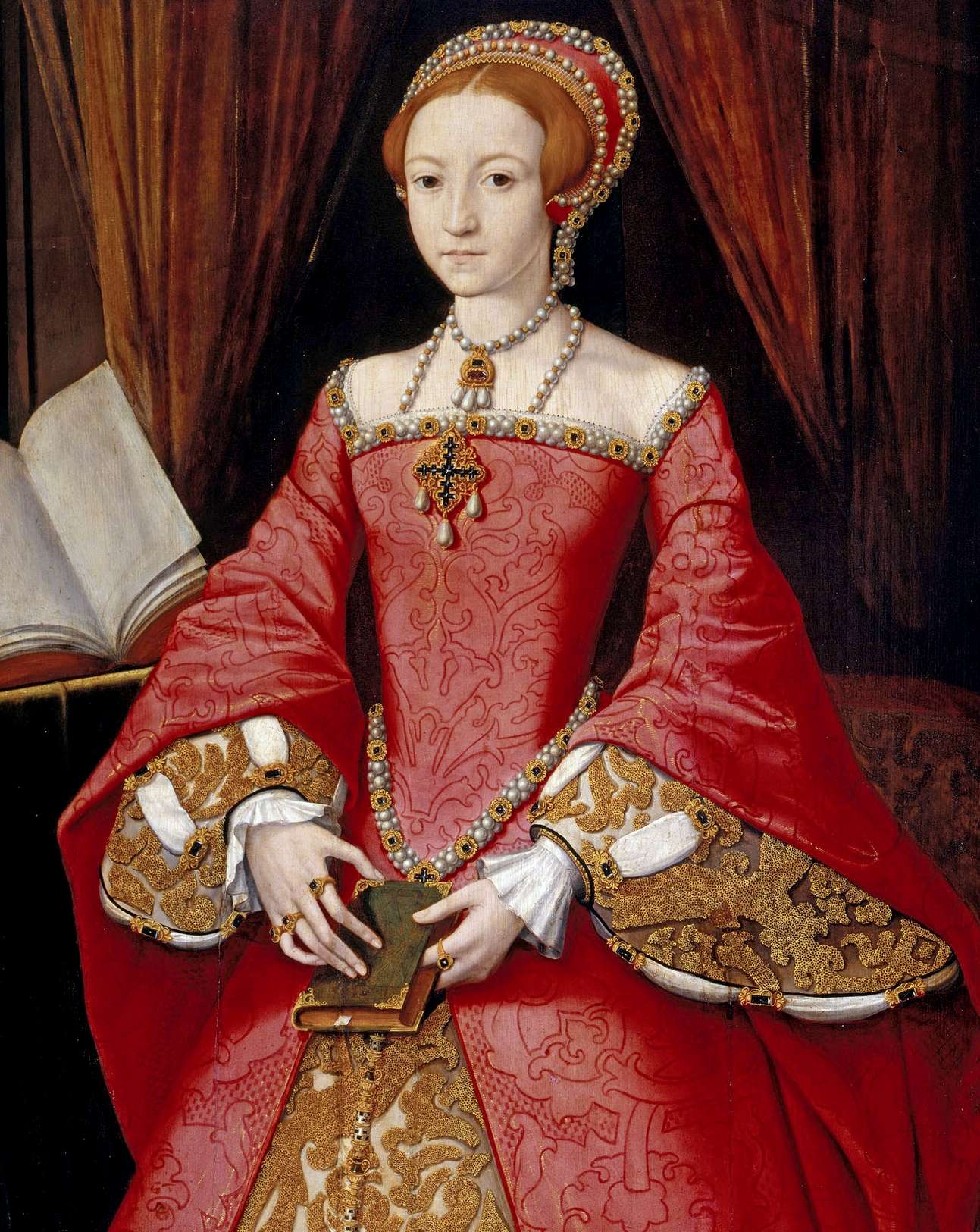
Queen Elizabeth the first was the first Queen of England with that name,
the second being Queen Elizabeth II the present and reigning monarch at
the time of writing (16-1-18).
Elizabeth I (7 September 1533 – 24 March 1603) was
Queen of England and Ireland from 17 November 1558 until her death on 24 March 1603. Sometimes called The Virgin Queen, Gloriana or Good Queen Bess, Elizabeth was the last monarch of the House of Tudor.
Elizabeth was the daughter of Henry VIII and Anne
Boleyn, his second wife, who was executed two-and-a-half years after Elizabeth's birth. Anne's marriage to
Henry VIII was annulled, and Elizabeth was declared illegitimate. Her half-brother,
Edward VI, ruled until his death in 1553, bequeathing the crown to Lady Jane Grey and ignoring the claims of his two half-sisters, Elizabeth and the Roman Catholic
Mary, in spite of statute law to the contrary. Edward's will was set aside and Mary became queen, deposing Lady Jane Grey. During Mary's reign, Elizabeth was imprisoned for nearly a year on suspicion of supporting Protestant rebels.
In 1558, Elizabeth succeeded her half-sister to the throne and set out to rule by good counsel. She depended heavily on a group of trusted advisers, led by William Cecil, 1st Baron Burghley. One of her first actions as queen was the establishment of an English Protestant church, of which she became the Supreme Governor. This Elizabethan Religious Settlement was to evolve into the Church of England. It was expected that Elizabeth would marry and produce an heir to continue the Tudor line. She never did, despite numerous courtships. As she grew older, Elizabeth became famous for her
virginity. A cult grew around her which was celebrated in the portraits, pageants, and literature of the day.
In government, Elizabeth was more moderate than her father and half-siblings had been. One of her mottoes was "video et taceo" ("I see but say nothing"). In religion, she was relatively tolerant and avoided systematic persecution. After the pope declared her illegitimate in 1570 and released her subjects from obedience to her, several conspiracies threatened her life, all of which were defeated with the help of her ministers' secret service. Elizabeth was cautious in foreign affairs, manoeuvring between the major powers of
France and Spain. She only half-heartedly supported a number of ineffective, poorly resourced military campaigns in the Netherlands, France, and Ireland. By the mid-1580s, England could no longer avoid war with Spain. England's defeat of the Spanish Armada in 1588 associated Elizabeth with one of the greatest military victories in English history.
Elizabeth's reign is known as the Elizabethan era. The period is famous for the flourishing of English drama, led by playwrights such as
William Shakespeare and Christopher Marlowe, and for the seafaring prowess of English adventurers such as
Francis
Drake. Some historians depict Elizabeth as a short-tempered, sometimes indecisive ruler, who enjoyed more than her share of luck. Towards the end of her reign, a series of economic and military problems weakened her popularity. Elizabeth is acknowledged as a charismatic performer and a dogged survivor in an era when government was ramshackle and limited, and when monarchs in neighbouring countries faced internal problems that jeopardised their thrones. Such was the case with Elizabeth's rival,
Mary, Queen of Scots, whom she imprisoned in 1568 and had executed in 1587. After the short reigns of Elizabeth's half-siblings, her 44 years on the throne provided welcome stability for the kingdom and helped forge a sense of national identity.
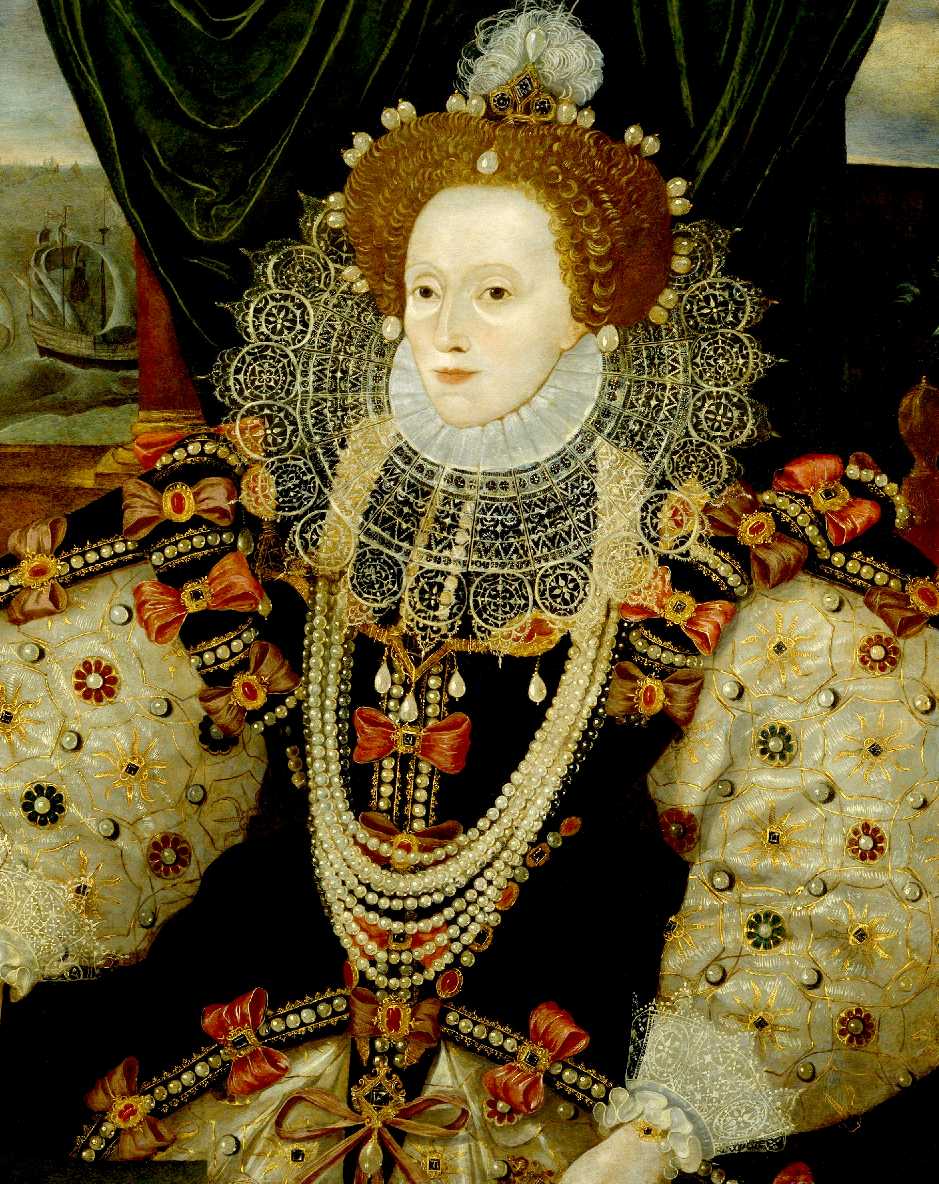
THE
VIRGIN QUEEN
From the start of Elizabeth's reign, it was expected that she would marry and the question arose to whom. Although she received many offers for her hand, she never married and was childless; the reasons for this are not clear. Historians have speculated that Thomas Seymour had put her off sexual relationships, or that she knew herself to be infertile. She considered several suitors until she was about fifty. Her last courtship was with Francis, Duke of Anjou, 22 years her junior. While risking possible loss of power like her sister, who played into the hands of King Philip II of Spain, marriage offered the chance of an heir. However, the choice of a husband might also provoke political instability or even insurrection.
ROBERT DUDLEY
In the spring of 1559, it became evident that Elizabeth was in love with her childhood friend Robert Dudley. It was said that Amy Robsart, his wife, was suffering from a "malady in one of her breasts" and that the Queen would like to marry Dudley if his wife should die. By the autumn of 1559, several foreign suitors were vying for Elizabeth's hand; their impatient envoys engaged in ever more scandalous talk and reported that a marriage with her favourite was not welcome in England: "There is not a man who does not cry out on him and her with indignation ... she will marry none but the favoured Robert". Amy Dudley died in September 1560, from a fall from a flight of stairs and, despite the coroner's inquest finding of accident, many people suspected Dudley of having arranged her death so that he could marry the queen. Elizabeth seriously considered marrying Dudley for some time. However, William Cecil, Nicholas Throckmorton, and some conservative peers made their disapproval unmistakably clear. There were even rumours that the nobility would rise if the marriage took place.
Among other marriage candidates being considered for the queen, Robert Dudley continued to be regarded as a possible candidate for nearly another decade. Elizabeth was extremely jealous of his affections, even when she no longer meant to marry him herself. In 1564, Elizabeth raised Dudley to the peerage as Earl of Leicester. He finally remarried in 1578, to which the queen reacted with repeated scenes of displeasure and lifelong hatred towards his wife, Lettice Knollys. Still, Dudley always "remained at the centre of [Elizabeth's] emotional life", as historian Susan Doran has described the situation. He died shortly after the defeat of the Armada. After Elizabeth's own death, a note from him was found among her most personal belongings, marked "his last letter" in her handwriting.
FOREIGN SUITORS
Marriage negotiations constituted a key element in Elizabeth's foreign
policy. She turned down Philip's own hand early in 1559 but for several years entertained the proposal of King Eric XIV of Sweden. For several years she also seriously negotiated to marry Philip's cousin Archduke Charles of
Austria. By 1569, relations with the Habsburgs had deteriorated, and Elizabeth considered marriage to two French Valois princes in turn, first Henry, Duke of Anjou, and later, from 1572 to 1581, his brother Francis, Duke of Anjou, formerly Duke of Alençon. This last proposal was tied to a planned alliance against Spanish control of the Southern Netherlands. Elizabeth seems to have taken the courtship seriously for a time, and wore a frog-shaped earring that Anjou had sent her.
In 1563, Elizabeth told an imperial envoy: "If I follow the inclination of my nature, it is this: beggar-woman and single, far rather than queen and married". Later in the year, following Elizabeth's illness with smallpox, the succession question became a heated issue in Parliament. They urged the queen to marry or nominate an heir, to prevent a civil war upon her
death. She refused to do either. In April she prorogued the Parliament, which did not reconvene until she needed its support to raise taxes in 1566. Having promised to marry previously, she told an unruly House:
I will never break the word of a prince spoken in public place, for my honour's sake. And therefore I say again, I will marry as soon as I can conveniently, if God take not him away with whom I mind to marry, or myself, or else some other great let happen.
By 1570, senior figures in the government privately accepted that Elizabeth would never marry or name a successor. William Cecil was already seeking solutions to the succession problem. For her failure to marry, Elizabeth was often accused of irresponsibility. Her silence, however, strengthened her own political security: she knew that if she named an heir, her throne would be vulnerable to a coup; she remembered that the way "a second person, as I have been" had been used as the focus of plots against her predecessor.
Elizabeth's unmarried status inspired a cult of virginity. In poetry and portraiture, she was depicted as a virgin or a goddess or both, not as a normal woman. At first, only Elizabeth made a virtue of her virginity: in 1559, she told the Commons, "And, in the end, this shall be for me sufficient, that a marble stone shall declare that a queen, having reigned such a time, lived and died a virgin". Later on, poets and writers took up the theme and turned it into an iconography that exalted Elizabeth. Public tributes to the Virgin by 1578 acted as a coded assertion of opposition to the queen's marriage negotiations with the Duke of Alençon.
Ultimately, Elizabeth would insist she was married to her kingdom and subjects, under divine protection. In 1599, she spoke of "all my husbands, my good people".
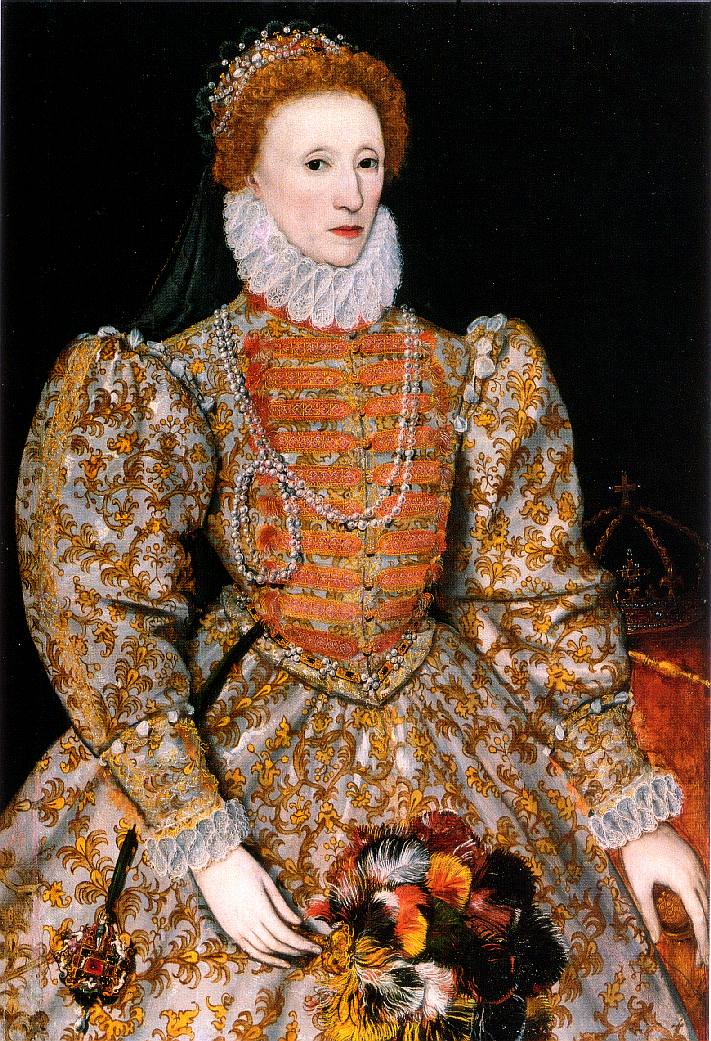
SIR
FRANCIS DRAKE
Drake
was noted in his life for one daring feat after another; his greatest was
his circumnavigation of the earth, the first after Magellan's. He sailed
from Plymouth on Dec. 13, 1577. The squadron consisted of five vessels,
the two larger ships being the Pelican, Drake's own ship, renamed Golden
Hind on the voyage, on August 20, 1578; and the Elizabeth, commanded by
John Winter. Three smaller vessels were the Marigold, Swan, and Benedict.
Only one ship, the Golden Hind, made the complete voyage, returning on
Sept. 26, 1580, "very richly fraught with gold,
silver,
pearls
and precious
stones" (Stow, Annales , p. 807). Number of crew members: 164
men.
The expedition was financed as a joint venture, the investors being such
high officials as Privy Councilors Robert Dudley, Earl of Leicester; Sir
Francis Walsingham; the Earl of Lincoln, Lord High Admiral of England;
also, Sir Christopher Hatton; Sir William Winter, Surveyor and Master of
Ordnance of the Navy; and John Hawkins, Drake's former commander. Queen
Elizabeth herself may have been an investor, though this is not quite
certain; what is certain is that she appropriated the lion's share of the
proceeds of the voyage. Drake himself participated to the tune of £1000,
a good sum for that time.
Drake
quietly informed the Queen and the investors of the amount of profit which
had been earned by the voyage - this has been stated to be 4600 percent (£47
for each £1 invested). On April 4, 1581, Elizabeth had Drake knighted, on
the occasion of a visit to the Golden Hind. He certainly deserved this
honor. According to the economist J. M. Keynes, the English foreign debt
was paid off from the Queen's share of the proceeds, and there was enough
left over (£42,000) for her to capitalize a new venture, the Levant
Company, a firm which played an important part in the development of British
foreign trade.
The World Encompassed by Sir Francis Drake , 1628, is the first detailed
account of the "famous voyage"; it adds very much to the Hakluyt
report. It is a compilation from several sources, the most important of
which is the journal of Francis Fletcher, the chaplain on board the Golden
Hind . Fletcher was not very friendly to Drake - he had been severely
disciplined by him ("excommunicated") while the voyagers were in
the East Indies.
Even
today in a modern United Kingdom knighthoods
typically follow significant contributions to the Treasury.
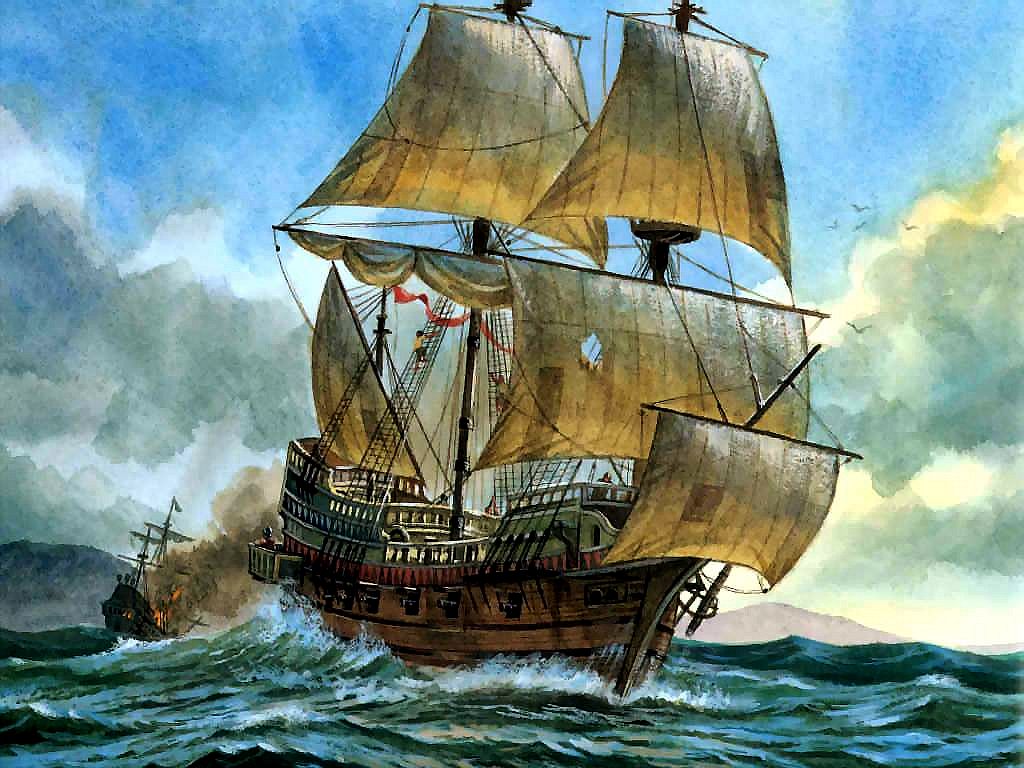
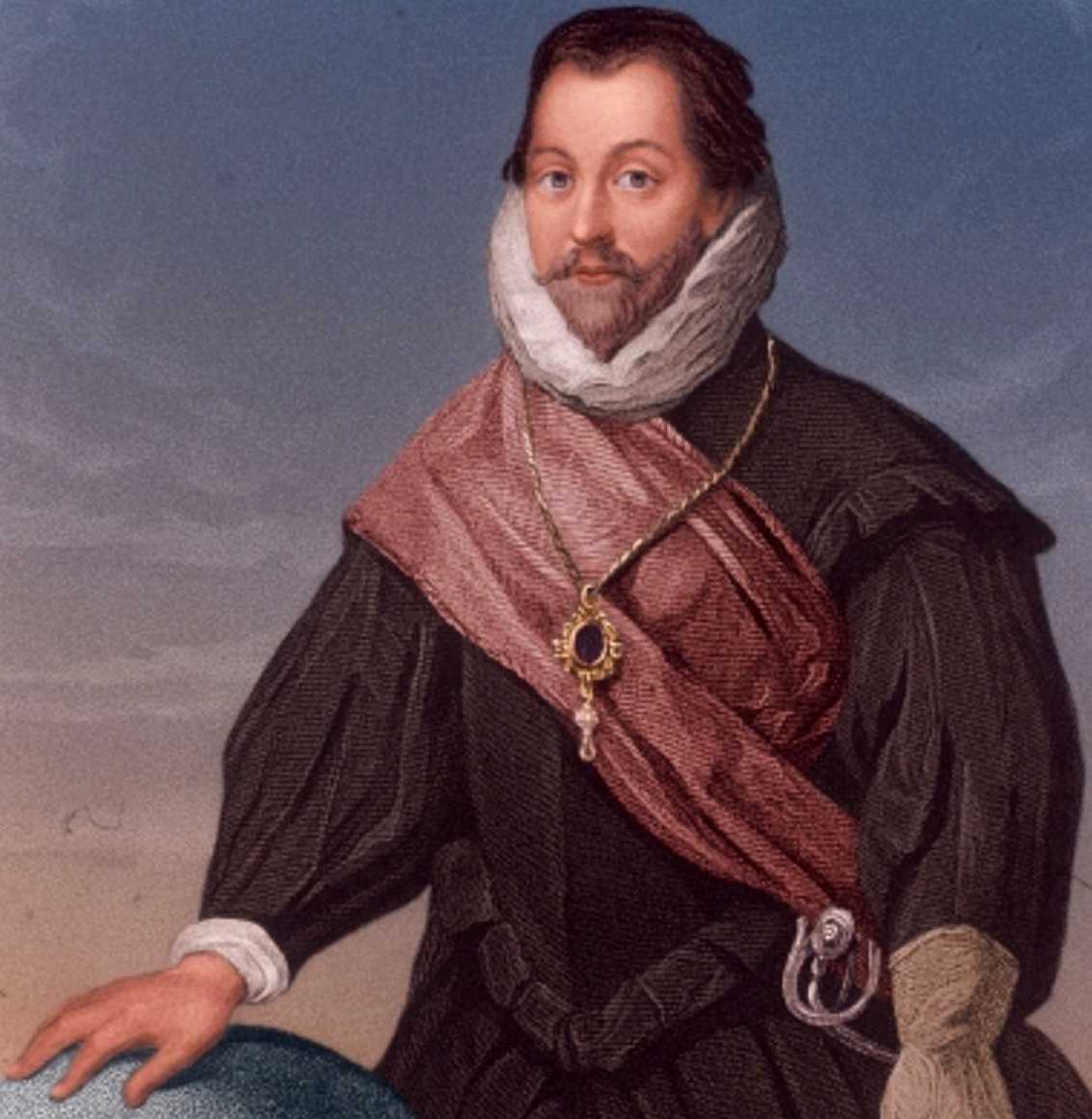
FRANCIS
DRAKE - Born on the Crowndale estate of Lord Francis Russell, 2nd earl
of Bedford, Drake’s father, Edmund Drake, was the son of one of the
latter’s tenant farmers. Edmund fled his native county after arraignment
for assault and robbery in 1548. The claim that he was a refugee from
Roman Catholic persecution was a later pious fiction. From even before his
father’s departure, Francis was brought up among relatives in Plymouth:
the Hawkins family, who combined vocations as merchants and pirates.
When Drake was about 18, he enlisted in the Hawkins family fleet, which
prowled for shipping to plunder or seize off the French coast. By the
early 1560s, he had graduated to the African trade, in which the Hawkins
family had an increasing interest, and by 1568 he had command of his own
ship on a Hawkins venture of illicit slave-trading in the Spanish colonies
of the Caribbean.
THE
SPANISH ARMADA
Meanwhile,
Sir Francis Drake had undertaken a major voyage against Spanish ports and ships in the
Caribbean in 1585 and 1586. In 1587 he made a successful raid on Cadiz, destroying the Spanish fleet of war ships intended for the Enterprise of England, as Philip II had decided to take the war to England.
On 12 July 1588, the Spanish Armada, a great fleet of ships, set sail for the
channel, planning to ferry a Spanish invasion force under the Duke of Parma to the coast of southeast England from the Netherlands. A combination of miscalculation, misfortune, and an attack of English fire ships on 29 July off Gravelines, which dispersed the Spanish ships to the northeast, defeated the Armada. The Armada straggled home to Spain in shattered remnants, after disastrous losses on the coast of Ireland (after some ships had tried to struggle back to Spain via the
North
Sea, and then back south past the west coast of Ireland). Unaware of the Armada's fate, English militias mustered to defend the country under the Earl of Leicester's command. He invited Elizabeth to inspect her troops at Tilbury in Essex on 8 August. Wearing a
silver breastplate over a white velvet dress, she addressed them in one of her most famous speeches:
My loving people, we have been persuaded by some that are careful of our safety, to take heed how we commit ourself to armed multitudes for fear of treachery; but I assure you, I do not desire to live to distrust my faithful and loving people ... I know I have the body but of a weak and feeble woman, but I have the heart and stomach of a king, and of a King of England too, and think foul scorn that Parma or
Spain, or any Prince of
Europe should dare to invade the borders of my realm.
When no invasion came, the nation rejoiced. Elizabeth's procession to a thanksgiving service at St Paul's Cathedral rivalled that of her coronation as a spectacle. The defeat of the armada was a potent propaganda victory, both for
Elizabeth and for Protestant England. The English took their delivery as a symbol of God's favour and of the nation's inviolability under a
virgin queen. However, the victory was not a turning point in the war, which continued and often favoured Spain. The Spanish still controlled the southern provinces of the
Netherlands, and the threat of invasion remained.
Sir Walter Raleigh claimed after her death that Elizabeth's caution had impeded the war against Spain:
If the late queen would have believed her men of war as she did her scribes, we had in her time beaten that great empire in pieces and made their kings of figs and oranges as in old times. But her Majesty did all by halves, and by petty invasions taught the Spaniard how to defend himself, and to see his own weakness.
Though some historians have criticised Elizabeth on similar grounds, Raleigh's verdict has more often been judged unfair. Elizabeth had good reason not to place too much trust in her commanders, who once in action tended, as she put it herself, "to be transported with an haviour of vainglory".
THE
SIX WIVES OF HENRY VIII
Catherine
of Aragon
Anne
Boleyn
Jane
Seymour
Anne
of Cleves
Catherine
Howard
Catherine
Parr
LINKS
& REFERENCE
http://www.english-heritage.org.uk/




